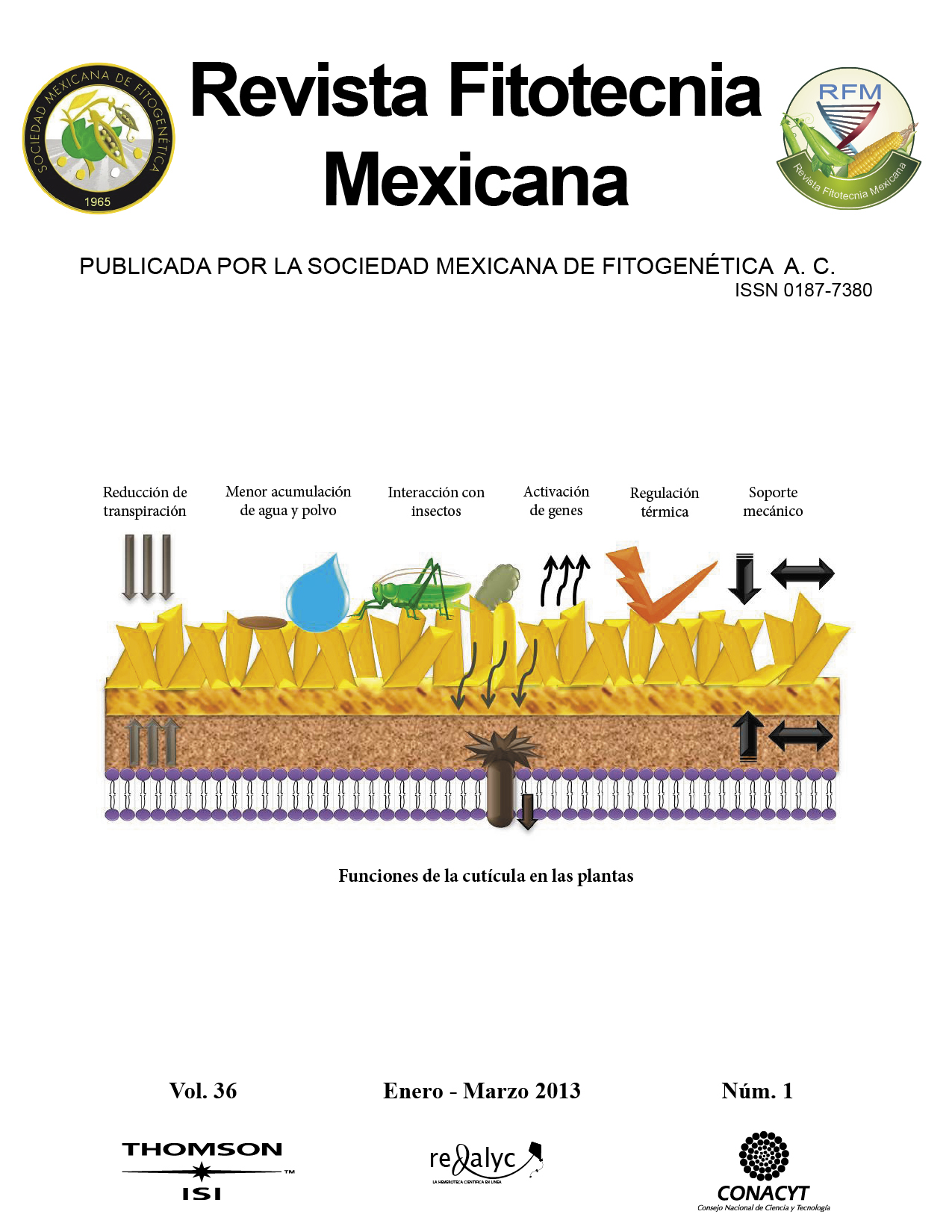PHYSICAL CHARACTERIZATION AND CHEMICAL COMPOSITION OF MAIZE RACES WITH BLUE/PURPLE GRAIN FROM TROPICAL AND SUBTROPICAL REGIONS OF OAXACA
Main Article Content
Abstract
The objective of this work was the physical and chemical characterization of blue/purple grain of 61 landraces of maize (Zea mays L.) related within 10 races, from tropical and subtropical regions of Oaxaca, Mexico. The physical variables were: test weight (TW), weight of 100 grains (WHG), color, hardness (flotation index, FI), and percentages of pedicel, pericarp and germ. Chemical variables were: protein, oil and total anthocyanin content (TAC). The principal components analysis (PCA) was used for grouping the races in function of the variables measured, except CAT. In the tropical region dominated the races with hard (Elotes Occidentales, Olotillo and Tepecintle) and intermediate (Conejo and Tuxpeño) grain hardness, while in the subtropical region predominated races with intermediate grain hardness. The highest variability in TAC was observed among tropical races, with values ranging from 186.5 to 1521.1 mg of cyanidin 3-glucoside equivalents/kg DM. Oil and protein content did not show any statistical difference among races, except in Bolita, in which the landraces with hard grain presented higher protein content than that with soft grain. The PCA showed four groups. Group I (Bolita, Chiquito, Mushito and Elotes Occidentales Subtrópico) was outstanding by high values of TW, protein and germen percentage; Group II (Conejo and Zapalote Chico) was remarkable by high values in oil and FI; Group III (Tuxpeño and Tepecintle) was distinguished by high percentages of pericarp in the grain. Group IV (Elotes Occidentales Trópico, Elotes Conicos and Olotillo), by its location close to central values of the axis, the races in this group were not remarkable by any of the analyzed variables. Physical and chemical characterization of the grain in Mexican maize races allows the identification of those with the quality require for their industrial use.

